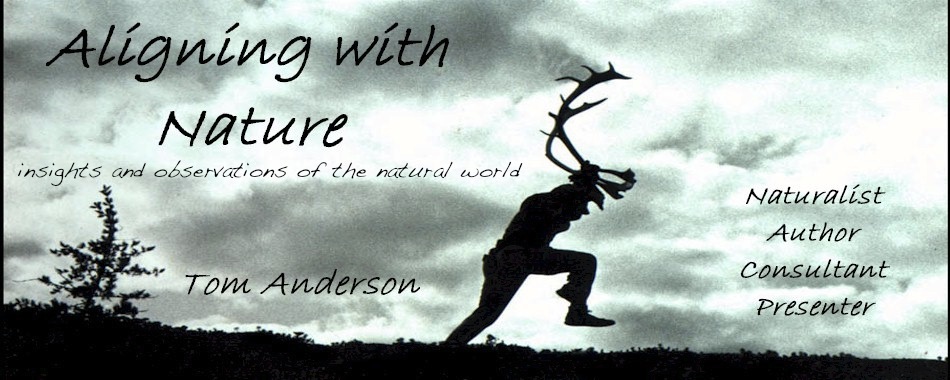Black Spruce Relics

I felt old as I leaned over a winter campfire fueled by a tree I planted myself. Spruce resins snapped and crackled. Embers arced into the cold air.
Staring into the fire I recalled the summer day when I kidnapped a pair of black spruce seedlings from a quiet thicket in the heart of the Canadian sub-arctic. I was near the northern edge of the tree line, known as taiga, where the trees are stunted. Not far to the north is the nearly treeless tundra.
A group of us had just finished paddling a remote, wild river that flowed to Hudson Bay. At our last camp I had hiked inland for some solo time. I loved the blended smells of heather, dwarf Labrador tea and spruce. I wanted to bring that scent home.
I knelt into the soft moss and extracted two small spruce that measured slightly longer than my boot sole. I wrapped the pliable roots in a handful of damp sphagnum moss and tucked both tiny trees in my day pack. When I returned to camp, I transferred the trees into the more cushioned confines of my larger Duluth pack.
I wanted a piece of the taiga. To me it signified remoteness. I also wanted to engage the seedlings in an experiment. What would happen when I planted the trees 1,000 miles south of this land of harsh, long winters and thick layer of underlying permafrost? Would they thrive and explode in growth? Would they die?
Far north trees generally don’t grow tall or thick. The growing conditions are too tough. Winter winds blow sharp-crystalled snow that shears tree growth. An old tree might be no taller than fifteen feet.
Back home, I unpacked my dirty, smoke-tainted clothes and found my two spruce still alive in their moss wraps. I planted them eight feet apart out near our garden and poured each a bucket of water. I had no idea if the sandy soil I tucked them into harbored more or less nutrients than their birth place. I knew that black spruce prefer poorly drained soils. It is said they like “wet feet.”
Black spruce are a common tree in northern Minnesota swamps and lowlands. But they are not found in east central Minnesota where I live.
There would be no permafrost below their roots. Was that a good thing or a bad thing? Perhaps the buried layer of ice plays a critical role in this tree’s health.
Since I transplanted those little spruce, back in the mid-1980s, biologists have learned that spruce depend heavily on fungal mycorrhizal relationships to augment the transfer of nutrients to the plant. It is estimated that 90% of all plants have a fungal partnership. That means healthy soils, those not tainted with modern chemical inputs, are really a vast and critical network of lacy fungal threads.
Both trees survived, but growth was slow. I would have thought that without the shackles of severe winters the trees would have shown more rapid growth. Once I brought home thin cross sections of dead subarctic spruce and sanded them to make it easier to count the densely packed growth rings. I needed a magnifying lens to count the 80 rings. Eighty years to grow a two-and-a-half inch truck.
After 12 years one of the spruce died. What happened? The remaining tree hung on and did grow taller. Last year, in 2022, it died. The tree never made it to 80 years. It never felt the smells and essences of the lonely land where it had first rooted itself.
Recently, I went out to cut that last dead spruce down. Because it was a wilderness vestige, it seemed more honorable to cut it by hand rather than with my loud, smelly chain saw.
I measured the downed tree and it was just under twenty feet tall. So the tree did in fact grow taller here than it would have in the Hudson Bay Lowlands.
When I trimmed the branches away from trunk I spied a clue that might have contributed to the tree’s demise. Up and down the trunk were the distinct rows of boring patterns left by yellow-bellied sapsuckers. Sapsuckers feed on hundreds of species of trees and in early spring the birds often choose maples, fruit and coniferous trees. The birds can unknowingly kill the tree by girdling the trunk which impedes the flow of sap to the roots.
Sapsuckers don’t live far to the north at the harsh edge of the tree line. When I planted the subarctic trees in outwash sand, I didn’t know what factors were essential for its survival.
It dawned on me that in my young naivety, I had made orphans of two tiny spruce. Pulled away from the protective thicket of their kin, I had made them experimental souvenirs and forced them to a foreign land where they had not evolved. I was responsible for shortening their potential. I’m older now and maybe, just maybe, a little wiser.
My spruce campfire’s flames were dying down and barely flickering. Strings of sparks rose into the air as I stirred the glowing coals. Some stories by indigenous peoples told of the ancestors’ spirits riding the sparks of campfires into the sky to mingle with the stars. I smiled watching the sparks drift northward on the breeze.
Spruce shadows heading home.
